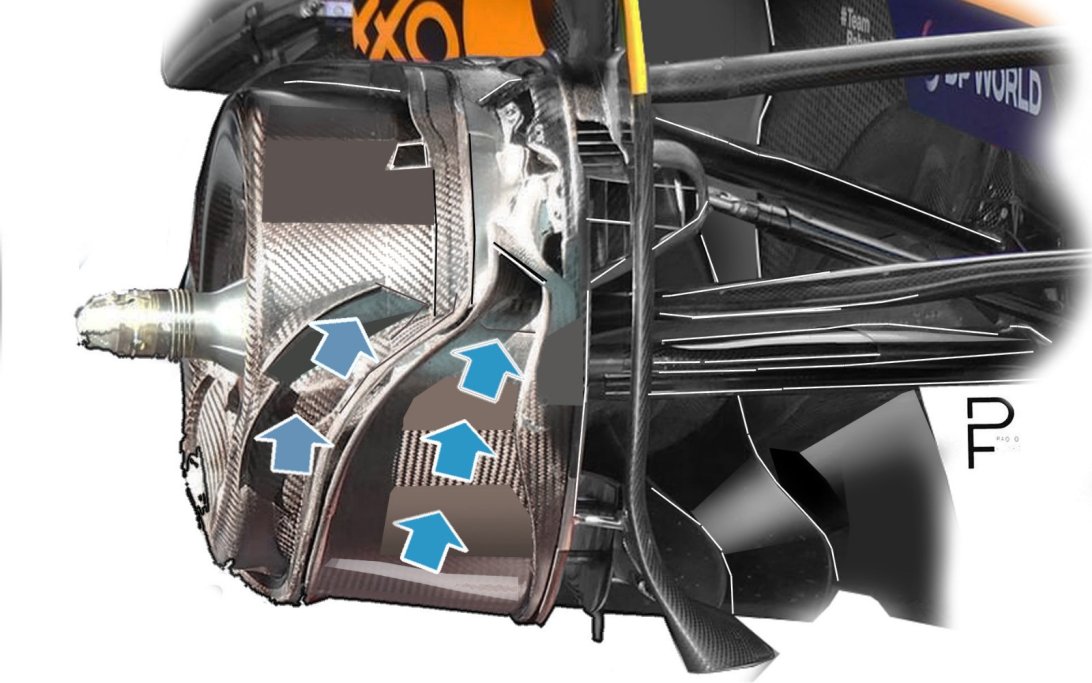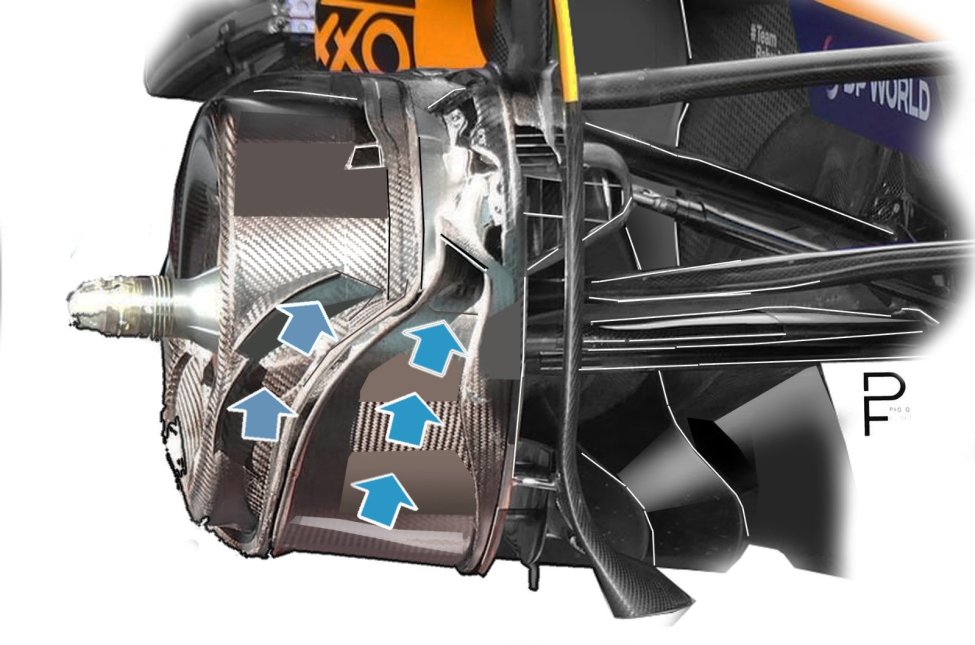The McLaren MCL39's dominant performance in Miami was aided by a substantial advantage given to it by the perfect tyre management, in terms of degradation, but also in keeping optimum levels of grip throughout.
The excellent balance of the car is well-established, thanks to a refined evolution of the championship-winning MCL38's pull-rod front suspension, but the ability to keep tyre pressures under control, and thus reducing or practically eliminating increases in temperatures, is not something common to other cars.
Since the ground effect cars were introduced in 2022, the wheel rims are completely closed through specific fairings that prevent heat produced from braking from being dissipated to the side of the car.
Instead, it is channelled via an in-wash concept to reduce wake turbulence. As a result, every team has been hit with the problem of an increase in temperatures inside the tyres, thus increasing pressures.
These two are connected factors, as a consequence of reducing the contact patch of the tyre, with a progressive increase in degradation. All teams have been trying to find solutions since 2022 to reduce these effects, whilst staying within the rules.
A decisively thorny factor centres around the internal channels inside the brake drums, and any flaps inside them, which, according to the rules, could be regarded as a movable aerodynamic device - and banned under the rules.
The MCL39's brake drums and system were subject to extensive FIA checks after the Miami GP, but all was found to be legal, with some teams purporting to have thermal imaging cameras showing cooler spots inside the complex brake ducts inside the drums.
These alleged cooler spots cannot be logically explained if the ducts, regardless of their sections, are fixed elements that do not having moving 'walls.'
They would be used to modify the speed and pressure of the air-flow, with the hypothesis of sections of the ducts varying their shape being raised as one potential answer.
As the hot air passes through the system, certain areas inside the drums would help decrease the heat.
Such a system could be designed with the need of moving parts, although naturally, it would require greater complexity of the drums, which would significantly increase the weight of the inner drums.
Just what McLaren is up to at the moment with its brake system remains a mystery, but it has passed all checks from the FIA, and remains firmly legal.
Also interesting:
Join RacingNews365's Sam Coop and Nick Golding, as they look back on the biggest talking points from the Miami Grand Prix. Ferrari's radio tension, Oscar Piastri taking charge and Max Verstappen needing to change his McLaren approach are major discussions.
Rather watch the podcast? Then click here!
Don't miss out on any of the Formula 1 action thanks to this handy 2026 F1 calendar that can be easily loaded into your smartphone or PC.
Download the calenderMost read














Join the conversation!